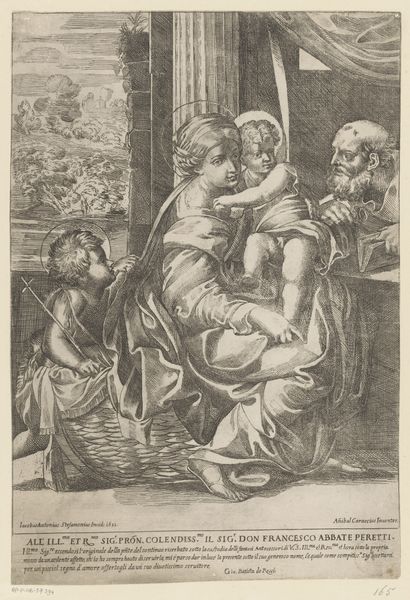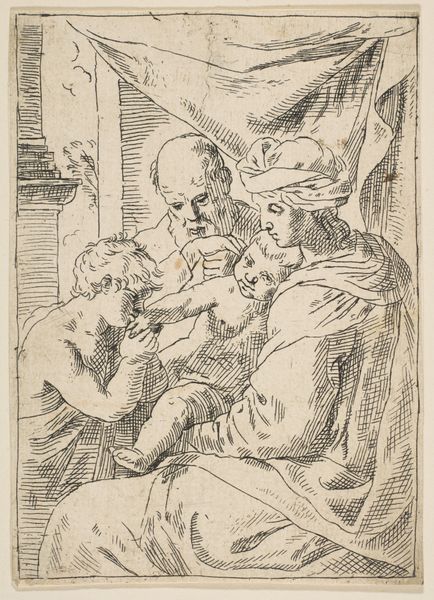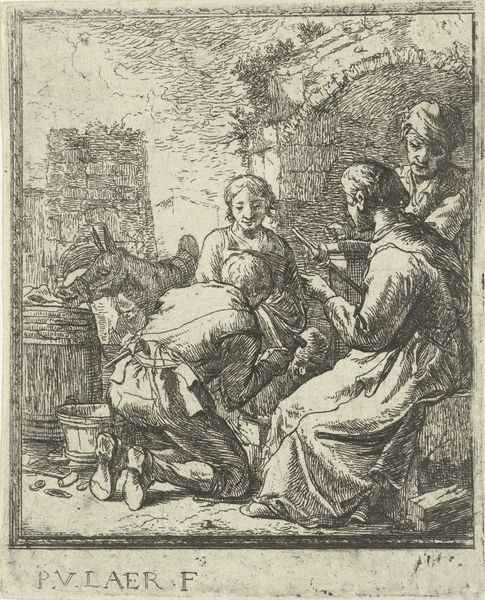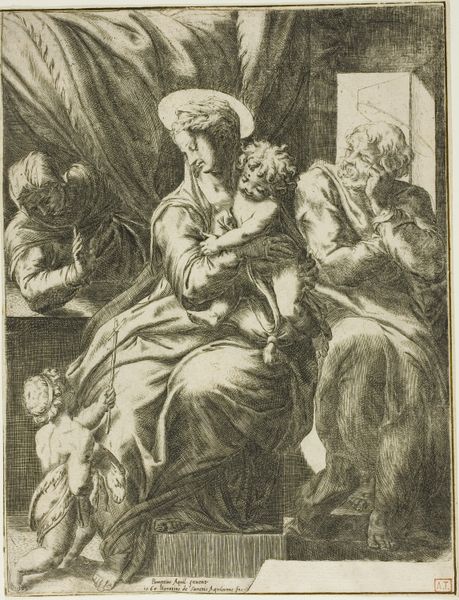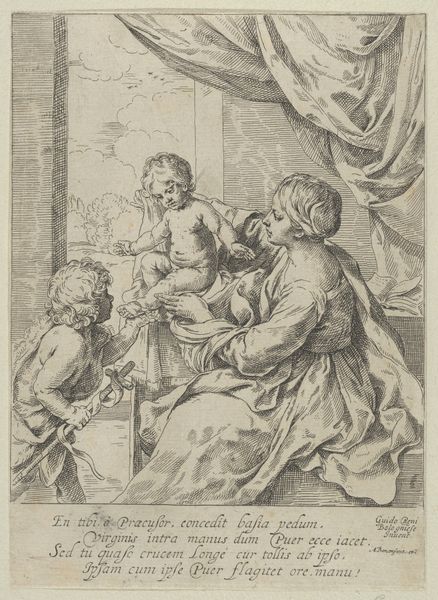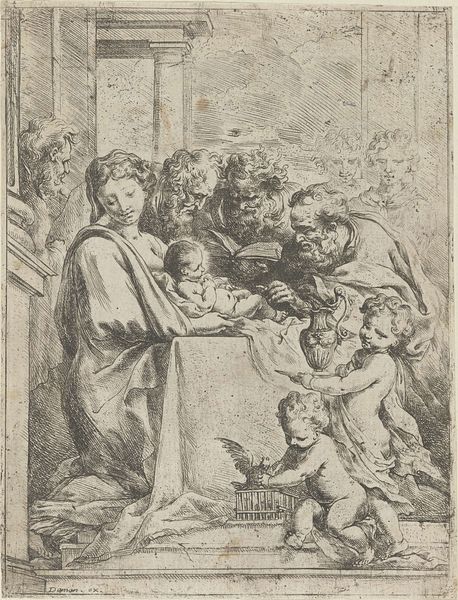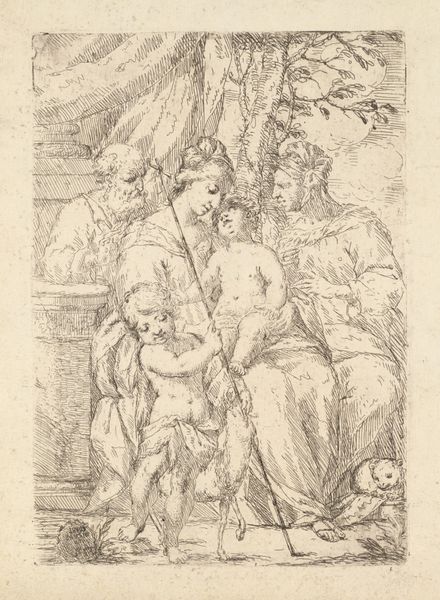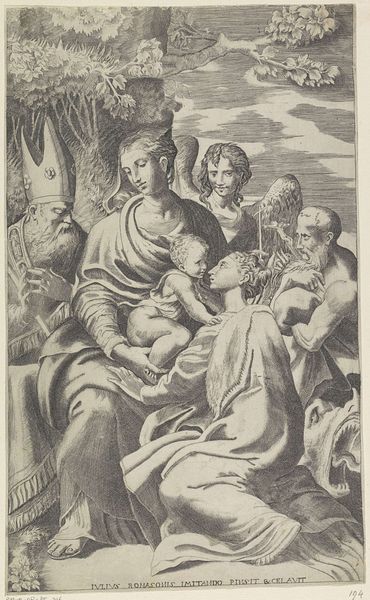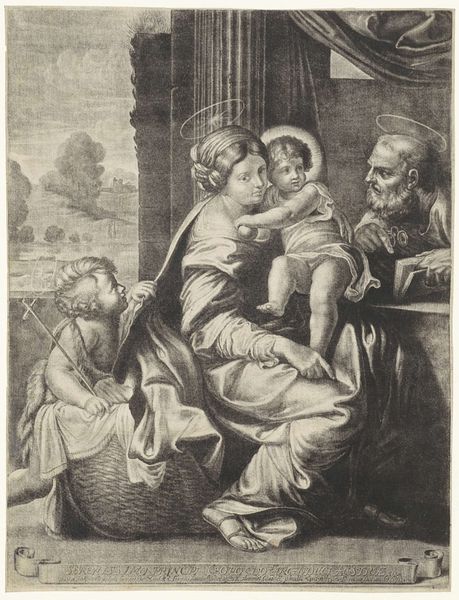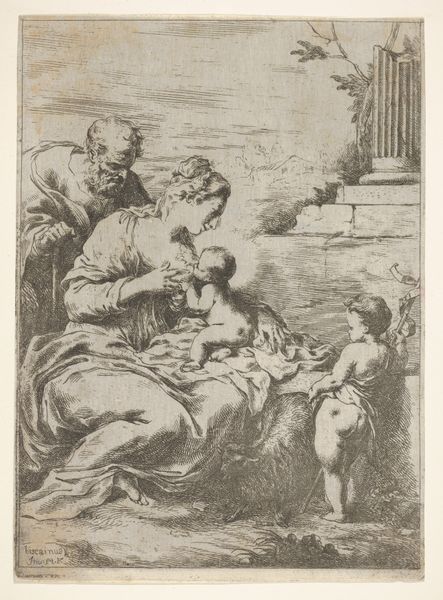
drawing, print, etching, intaglio, engraving
#
drawing
#
baroque
# print
#
etching
#
intaglio
#
figuration
#
11_renaissance
#
history-painting
#
engraving
#
virgin-mary
Dimensions: Sheet (Trimmed): 9 3/4 × 7 5/16 in. (24.8 × 18.6 cm)
Copyright: Public Domain
Curator: Let's take a look at "Holy Family with Saint John the Baptist." It's a Baroque print rendered through etching and engraving methods, dating approximately from 1615 to 1665. Editor: My first impression is one of quiet domesticity. The linework is dense, almost claustrophobic, yet the composition centers around Mary, solid and maternal. It almost makes it like a painting of everyday family life despite it featuring these historic figures. Curator: Note the interplay of techniques here. The etcher's needle would allow for those fluid lines defining forms, while engraving could carve out more precise details to describe fabric, skin, or the landscape seen out the window. The matrix the ink is on impacts the interpretation of it entirely. Editor: The window definitely draws my attention. It seems more than a simple background, acting almost as a halo for Saint John. I notice he is reading, perhaps alluding to his role as a prophet. How do you feel that symbol interacts with the setting? Curator: The setting emphasizes the socioeconomic status inherent in depicting the Holy Family. Consider the draped curtain and the architectural detail of the window; it's far from humble. Printmaking itself makes sacred imagery accessible, disseminating religious and class ideas widely. Editor: I agree, and that availability shaped religious identity. It looks as though Jesus’ gestures could mean his blessings or baptizing. That accessibility likely democratized spiritual meaning, letting ordinary people feel closer to the divine narratives. It personalizes the ideas of religion while alluding to what happens in a conventional setting. Curator: Exactly, by purchasing such images, families of the time took on a shared history that wasn’t otherwise in their immediate making. A history only accessed through viewing the prints. This etching, beyond its beauty, gives way to accessing how consumers connected to cultural norms through printed means. Editor: And looking closer, the tenderness in Mary's gaze towards the children becomes incredibly poignant. It's a universal sentiment of maternal love expressed through very specific cultural symbolism. It feels less staged because of it and much more natural. Curator: A confluence of accessible craft and culturally shared ideas made this "Holy Family" an enduring piece of reproduced work of the era, giving many audiences a touchpoint with religious ideologies. Editor: It's fascinating to see how process and symbol intertwine, revealing both the material realities and the enduring cultural power of this imagery.
Comments
No comments
Be the first to comment and join the conversation on the ultimate creative platform.
